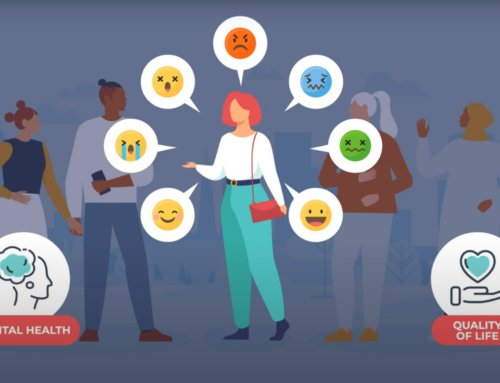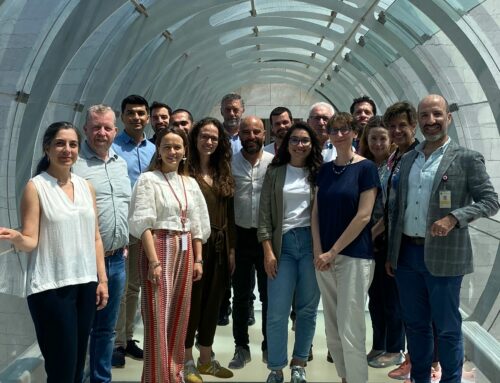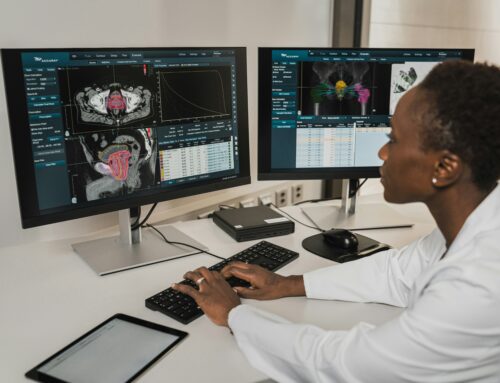Strong foundations are in place. Now, Phase 2 needs to deliver a sustainable, high-quality solution with extensive observational study, and to continue external engagement.
Scientific work
The FAITH project mid-term review took place virtually on 01 July, 2021; it provided the EC, and their chosen experts, with a good opportunity to critically assess progress to date, as well as shape efforts for the remaining time period. Simply put, four key principles have been guiding the team’s vision for the FAITH solution:
- Avoid the need for many devices (simplicity/convenience);
- Design with privacy in mind (protect sensitive data and vulnerable users);
- Make things easier for doctors (add value, reduce burden);
- Make things better for patients (add value, improve quality of life).
FAITH has maintained the focus on key users (doctors and patients) throughout. The team has completed comprehensive stakeholder mapping and needs-analysis work, helping to scope a relevant and useful solution and informing the development of appropriate use cases.
The rigorous definition of clinical trial protocols and specification of variables, the Case Report Form (CRF), and an integrated statistical plan have been ensuring scientific validity. Clinical partners led this work, achieved through intensive, in-depth weekly meetings.
Technical development
In parallel, the technical development, which has made good progress, supported all of this.
Reflecting the outcomes of the aforementioned needs analysis, user experience design has been at the centre of development work. We followed a best practice approach towards architecture definition, paying close attention to the foundations of this work. This means, for example, defining how properly to capture functional and non-functional requirements, and how to visualise architectural decisions so they can evolve efficiently as needs be in the project.
The team led an analysis of Federated Learning techniques, along with review of many of the necessary supporting tools and libraries. Fundamental, of course, is the FAITH mobile application. In this regard, a core code project including libraries necessary was provided, alongside with UI integration procedures. Additionally, the team has developed and put in force an integration plan to monitor the integration activities performed.
In terms of implementing a voice/NLP interface to gauge a user’s mental outlook, this objective is multi-faceted, and consequently the project has worked towards it in several paths; the first being, capturing voice input via the mobile application and offloading for vocal feature analysis to cater for the trial; the second, experimenting with both on-device and browser-based approaches to the vocal feature analysis so as to ultimately achieve this objective in a federated privacy-preserving manner; the third, investigating different methods for capturing the voice recording (based on methods used in the literature); the fourth, investigating methods for using NLP to automate questionnaire delivery, for example, speech recognition using TensorFlow.
Dissemination and networking
Throughout this first phase of the project effort, FAITH adopted an open mindset and agile approach. This allowed the team to respond effectively to key learnings or events along the way. For example, initially, project coordinator WIT was tasked with leading the development of the trial protocol; but it soon became apparent that this would more effectively be delivered by clinical partners. On the technical side, the need for two related, but distinct framework implementations emerged as the project matured; a framework that would best serve the needs of the FAITH trial in terms of data capture and analysis, and one that would deliver the results of that analysis using federated learning (FL).
In parallel with the user-led Scientific and Technical work, significant dissemination work has been ongoing. The FAITH Consortium engaged in dedicated healthcare stakeholder clustering activities, in addition to the standard dissemination and communication activities. These activities targeted the healthcare community, to collect feedback in order to influence the direction that FAITH should take. For example, FAITH is a member of the OPEN DEI Health & Care cluster funded by the European Commission. In addition, FAITH established a “Cancer Survivorship – AI for Well-being” cluster; this comprises five EU-funded projects brought together by common research interests (mental health, well-being, depression, and patient support) and a common approach (a participatory research vision).
Conclusions
Overall, the reviewers were very happy with project progress. Two of the key success areas identified included the federated learning implementation, and the level of dissemination, engagement with other projects, and cluster development.
The FAITH team is fully in agreement with key recommendations; these include, for example, developing a Plan B in case of pandemic resurgence impacting on trials, and exploring ways of engaging people for a full year, thus ensuring continued participation in the trials.
The next phase will build on the strong foundations already in place. Key steps comprise:
- Running the FAITH Observational Study;
- Delivering sustainable solutions through well designed and high-quality software artifacts;
- Further expanding communication, dissemination, and exploitation activities (with a focus on project clustering and end-user engagement).
Authors: Philip O’Brien, Christine O’Meara, Gary McManus of Walton Institute.




